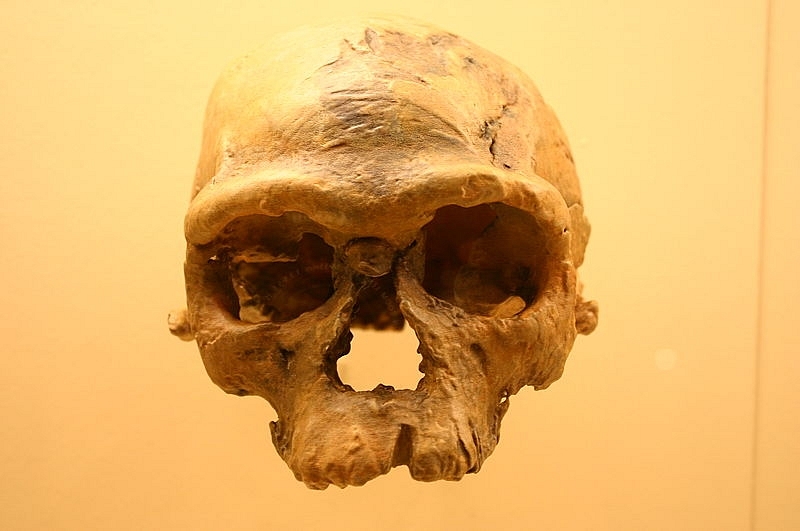Insta
Human Story Retold: The Discovery Of Oldest Bones Challenges East Africa Theory

Specimen at the David H. Koch Hall of Human Origins at the Smithsonian Natural History Museum. (Wikimedia Commons)
We were told that the origin of the human species evolved in East Africa 200,000 years ago – but this theory has been shaken up by a new discovery of bones that were about 300,000 years old.
Fossils that have been recovered from an old mine on a desolate mountain in Morocco are now retelling the human story. Archaeologists have unearthed the bones of at least five people at Jebel Irhoud, a former barite mine 100km west of Marrakesh, in excavations that lasted years. Dating tests revealed that a tooth and stone tools found with the bones were about 300,000 years old!
Jean-Jacques Hublin, a senior scientist on the team at the Max Planck Institute for Evolutionary Anthropology in Leipzig, said the extreme age of the bones makes them the oldest known specimens of modern humans and questions the validity of the idea that the earliest members of our species evolved in a “Garden of Eden” in East Africa one hundred thousand years later.
“It looks like our species was already present probably all over Africa by 300,000 years ago. If there was a Garden of Eden, it might have been the size of the continent.”
A comparison between the freshly-excavated fossils with those of modern humans reveals this:
Facially, the closest match was with modern humans. The lower jaw was similar to modern Homo sapiens too, but much larger. The most striking difference was the shape of the braincase which was more elongated than that of humans today. Research suggests that the modern brain evolved in Homo sapiens and was not inherited from a predecessor. Apart from being more stout and muscular, the adults at Jebel Irhoud looked similar to people alive today.
“The face of the specimen we found is the face of someone you could meet on the tube in London,” Hublin said.
The tools found were based on a knapping technique called Levallois, adding to the realisation that the sophisticated way of shaping tools originated earlier than thought.
Introducing ElectionsHQ + 50 Ground Reports Project
The 2024 elections might seem easy to guess, but there are some important questions that shouldn't be missed.
Do freebies still sway voters? Do people prioritise infrastructure when voting? How will Punjab vote?
The answers to these questions provide great insights into where we, as a country, are headed in the years to come.
Swarajya is starting a project with an aim to do 50 solid ground stories and a smart commentary service on WhatsApp, a one-of-a-kind. We'd love your support during this election season.
Click below to contribute.
Latest